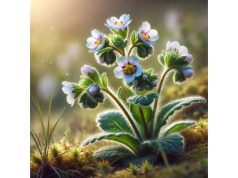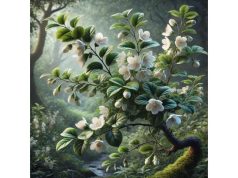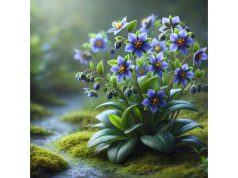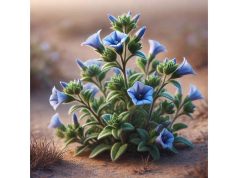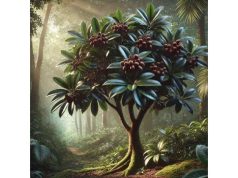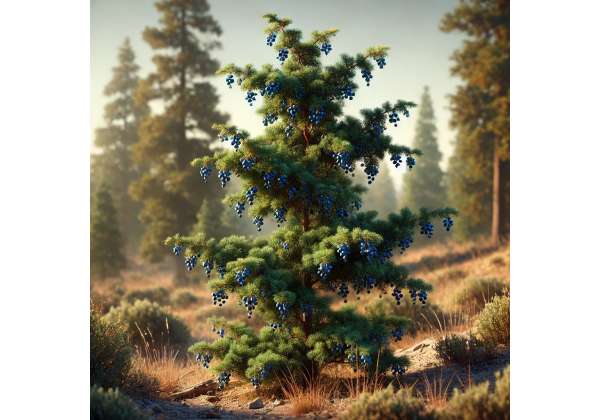
Eastern Red Cedar is a striking, aromatic conifer native to North America that has been admired for centuries for its resilience, distinctive reddish-brown wood, and versatile applications. This majestic tree, with its dense, scale-like foliage and rich, spicy fragrance, has played an important role in traditional medicine, cultural symbolism, and modern sustainable practices. Valued not only for its ornamental and timber qualities but also for its potent therapeutic properties, Eastern Red Cedar offers a broad spectrum of benefits—from supporting respiratory and immune health to providing natural insect-repellent properties. Today, both indigenous traditions and contemporary scientific research underscore its potential to enhance wellness, making it a highly sought-after natural remedy and a sustainable resource.
- Supports respiratory health and helps alleviate cough and congestion
- Provides potent antioxidant and anti-inflammatory effects
- Enhances immune function and aids in natural infection control
- Offers natural insect-repellent properties and helps deter pests
- Contributes to skin health and wound healing through its astringent properties
- Supplies high-quality timber with enduring aesthetic and ecological benefits
- Promotes overall vitality, stress relief, and environmental sustainability
Table of Contents
- Eastern Red Cedar Botanical Profile and Key Characteristics
- Eastern Red Cedar Historical Legacy and Cultural Significance
- Eastern Red Cedar Phytochemical Profile and Active Compounds
- Eastern Red Cedar Health Benefits and Therapeutic Properties
- Eastern Red Cedar Uses, Applications, and Safety Considerations
- Eastern Red Cedar Scientific Research and Recent Study Insights
- Eastern Red Cedar Frequently Asked Questions (FAQ)
Eastern Red Cedar Botanical Profile and Key Characteristics
Eastern Red Cedar (Juniperus virginiana) is a robust evergreen conifer that graces the landscapes of eastern North America. Recognized by its distinctive reddish-brown bark and fine, scale-like leaves, this tree is celebrated for both its aesthetic appeal and its functional properties.
Morphology and Growth Habits
Eastern Red Cedar typically reaches heights of 10 to 20 meters, with a conical to rounded crown that gradually becomes irregular with age. The bark, which gives the tree its common name, is deeply furrowed and exhibits a rich, reddish hue that intensifies as the tree matures. The foliage consists of small, overlapping scales arranged in a dense, fan-like pattern along the twigs. These leaves, though inconspicuous individually, collectively create a soft, aromatic texture that is immediately recognizable.
The tree produces small, blue-gray berries that are an important food source for wildlife. While Eastern Red Cedar is not known for showy flowers, its overall structure and resilient form have made it a staple in both natural forests and managed landscapes.
Habitat and Ecological Adaptations
Eastern Red Cedar is highly adaptable, thriving in a variety of soil types—from rocky outcrops and sandy soils to rich loams. It is particularly common in dry, upland areas, although it can also be found along streambanks and in riparian zones. The tree’s deep root system enables it to access water efficiently, making it well-suited to the variable moisture conditions of its native range. Moreover, Eastern Red Cedar is known for its tolerance to harsh conditions, including cold winters and periods of drought, which underscores its ecological resilience.
Role in Ecosystems
In its natural habitat, Eastern Red Cedar serves several vital ecological functions. Its dense foliage provides shelter for numerous bird species and small mammals, while its berries offer a crucial food source during the winter months. Additionally, the tree plays an important role in soil stabilization, helping to prevent erosion in vulnerable areas. Its ability to sequester carbon and improve air quality further enhances its environmental value, making it a key player in sustainable forest ecosystems.
Cultivation and Uses in Landscaping
Eastern Red Cedar is widely planted in urban and rural settings due to its attractive appearance and low maintenance requirements. Landscape architects favor it for windbreaks, privacy screens, and ornamental plantings. Its rapid growth and adaptability make it a popular choice for reforestation and habitat restoration projects. Sustainable management practices are essential for preserving Eastern Red Cedar stands, especially in the face of threats from pests and environmental changes.
Eastern Red Cedar’s robust botanical profile, characterized by its distinctive bark, resilient growth habits, and significant ecological contributions, makes it an invaluable resource both in natural ecosystems and human-designed landscapes.
Eastern Red Cedar Historical Legacy and Cultural Significance
Eastern Red Cedar has a storied past that intertwines natural history with cultural tradition. For centuries, this tree has been integral to the lives of Native American tribes, early European settlers, and modern communities, symbolizing strength, protection, and natural abundance.
Traditional Medicinal and Practical Uses
Native American tribes have long recognized the medicinal properties of Eastern Red Cedar. Various parts of the tree, including its bark and needles, were used in traditional remedies to treat respiratory ailments, colds, and fevers. The natural oils extracted from the cedar were believed to possess antimicrobial properties, making them effective in treating wounds and infections. Additionally, the wood of Eastern Red Cedar was highly valued for its aromatic quality and resistance to decay. It was used to craft tools, clothing, and even ceremonial objects, highlighting its multifaceted role in indigenous cultures.
Influence on Early Settlers
For early European settlers, Eastern Red Cedar was a vital resource. Its durable, rot-resistant wood was used extensively in the construction of homes, barns, and furniture. The tree’s pleasant aroma also made it a popular choice for lining closets and chests, as its natural oils helped repel insects. Over time, Eastern Red Cedar became emblematic of the American frontier—an enduring symbol of natural beauty and resourcefulness that contributed to the development of rural communities and local economies.
Cultural Symbolism and Folklore
Throughout history, Eastern Red Cedar has been imbued with rich symbolism. In many Native American cultures, the cedar is considered sacred—a guardian spirit that offers protection and healing. Folklore often depicts the tree as a symbol of endurance and renewal, its evergreen nature serving as a metaphor for life’s continuity. This cultural significance is reflected in art, music, and traditional stories, where Eastern Red Cedar is celebrated not only for its practical uses but also for its spiritual and emotional resonance.
Modern Revival and Conservation Efforts
In recent decades, there has been a renewed interest in the conservation and sustainable management of Eastern Red Cedar. Environmental organizations and forestry experts have collaborated to protect and restore cedar populations, particularly in areas where they have been threatened by invasive pests and habitat loss. Educational programs and community initiatives now emphasize the cultural and ecological importance of Eastern Red Cedar, ensuring that its legacy endures for future generations.
The historical and cultural legacy of Eastern Red Cedar underscores its enduring value as a natural and cultural resource. From its traditional medicinal uses to its symbolic significance in Native American folklore and early American history, Eastern Red Cedar remains a cherished and multifaceted tree.
Eastern Red Cedar Phytochemical Profile and Active Constituents
The therapeutic properties of Eastern Red Cedar are largely attributed to its rich phytochemical composition. Modern studies have identified several bioactive compounds within the tree that contribute to its medicinal efficacy, supporting centuries of traditional use with scientific validation.
Natural Oils and Terpenes
One of the key components found in Eastern Red Cedar is its essential oil, which is extracted primarily from the needles and bark. These oils are rich in terpenes, such as cedrol, thujopsene, and α-cedrene, which are known for their antimicrobial, anti-inflammatory, and calming properties. The distinct aroma of cedar oil is not only pleasing but also serves practical purposes, such as repelling insects and promoting respiratory health. These terpenoids have been widely studied for their potential to reduce inflammation and support immune function.
Flavonoids and Polyphenols
Eastern Red Cedar also contains a variety of flavonoids and polyphenolic compounds, which act as powerful antioxidants. These substances help protect cells from oxidative stress by neutralizing free radicals, thereby reducing the risk of chronic diseases and supporting overall health. The antioxidant activity of these compounds contributes significantly to the tree’s ability to alleviate inflammation and enhance the body’s natural defense mechanisms.
Natural Salicylates
Research has identified natural salicylates in Eastern Red Cedar, compounds that share similarities with the active ingredients found in aspirin. These compounds play a role in the tree’s analgesic and anti-inflammatory effects, making it a traditional remedy for pain relief and fever reduction. The presence of natural salicylates in the cedar’s bark supports its historical use in treating headaches, muscle pain, and joint inflammation.
Tannins and Astringent Compounds
The bark of Eastern Red Cedar is also a source of tannins, which are polyphenolic compounds known for their astringent properties. Tannins help tighten tissues and reduce inflammation, making them useful in treating minor wounds, skin irritations, and gastrointestinal disturbances. Their antimicrobial activity further enhances the tree’s capacity to serve as a natural remedy in various traditional healing practices.
Extraction and Standardization
Modern extraction techniques, such as steam distillation and solvent extraction, are employed to isolate and concentrate the bioactive compounds from Eastern Red Cedar. Standardization of these extracts is crucial to ensure consistent quality and potency, particularly when used in clinical research and commercial herbal products. Advances in extraction technology continue to optimize the yield of essential oils and other active constituents, further validating the medicinal properties of this venerable tree.
The comprehensive phytochemical profile of Eastern Red Cedar provides a robust scientific foundation for its therapeutic applications. The synergy among its natural oils, flavonoids, salicylates, and tannins not only corroborates its traditional uses but also opens new avenues for its application in modern natural medicine.
Eastern Red Cedar Health Benefits and Therapeutic Properties
Eastern Red Cedar has long been esteemed for its extensive health benefits, which span from natural pain relief to immune support. Its diverse bioactive compounds contribute to its broad therapeutic profile, making it a valuable resource in both traditional herbal medicine and contemporary natural health practices.
Pain Relief and Anti-Inflammatory Effects
The natural salicylates present in Eastern Red Cedar provide effective pain relief, much like conventional aspirin. These compounds help reduce inflammation and alleviate discomfort associated with headaches, muscle soreness, and joint pain. The anti-inflammatory properties of its flavonoids further enhance its ability to mitigate chronic inflammation, making it a beneficial remedy for conditions such as arthritis and other inflammatory disorders.
Respiratory Support and Immune Function
Eastern Red Cedar has been traditionally used to support respiratory health. Infusions and decoctions prepared from its needles and bark are known to help alleviate symptoms of colds, coughs, and bronchitis. The antimicrobial and anti-inflammatory properties of its essential oils contribute to soothing the respiratory tract, while the antioxidant compounds bolster the immune system, thereby enhancing the body’s natural defense mechanisms.
Digestive Health and Gastrointestinal Comfort
The astringent qualities of tannins found in Eastern Red Cedar can help soothe the digestive tract and reduce gastrointestinal irritation. Traditional remedies often include the use of cedar bark extracts to treat digestive ailments such as indigestion and diarrhea. By promoting a balanced gut environment and reducing inflammation, Eastern Red Cedar supports overall digestive health and nutrient absorption.
Skin Healing and Topical Applications
Topical preparations made from Eastern Red Cedar extracts have been used for centuries to promote skin health. The antimicrobial and anti-inflammatory properties of its bioactive compounds help accelerate wound healing, reduce redness, and combat skin irritations such as eczema and acne. These properties make it a popular ingredient in natural skincare products and traditional poultices used for minor cuts and burns.
Cardiovascular and Metabolic Benefits
Preliminary research suggests that the antioxidant properties of Eastern Red Cedar may also have cardiovascular benefits. By neutralizing free radicals and reducing oxidative stress, these compounds help protect blood vessels and promote healthy circulation. Additionally, some studies indicate that cedar extracts may contribute to improved metabolic function, supporting healthy blood sugar levels and lipid profiles.
Holistic Wellness
When incorporated into an integrated health regimen, Eastern Red Cedar can contribute to overall well-being by addressing multiple physiological systems simultaneously. Its ability to provide pain relief, support respiratory and digestive health, enhance immune function, and promote skin healing makes it a versatile natural remedy that aligns with holistic and preventive health strategies.
The diverse health benefits of Eastern Red Cedar, supported by both traditional knowledge and modern research, underscore its value as a natural, multifaceted therapeutic resource.
Eastern Red Cedar Uses, Applications, and Safety Considerations
Eastern Red Cedar is utilized in a wide range of applications spanning traditional herbal medicine, modern nutraceuticals, and commercial industries. Its versatility is evident in its various forms and uses, from medicinal extracts to durable, aromatic wood products.
Herbal and Medicinal Uses
Traditionally, Eastern Red Cedar has been employed in herbal medicine for its numerous therapeutic benefits. Common preparations include:
- Herbal Teas and Decoctions: Made by boiling the bark or needles to extract their medicinal properties, these infusions are used to relieve pain, reduce fever, and soothe respiratory ailments.
- Tinctures and Extracts: Concentrated, alcohol-based formulations that capture the potent bioactive compounds for quick absorption.
- Powdered Supplements: Dried and ground material that can be encapsulated or added to beverages, providing a convenient way to harness the benefits of Eastern Red Cedar.
- Topical Applications: Creams, ointments, and poultices formulated with cedar extracts are used for skin healing and to treat minor wounds and inflammations.
Commercial and Environmental Applications
Beyond its medicinal uses, Eastern Red Cedar is prized for its high-quality wood, which is widely used in furniture making, construction, and the production of cedar chests. Its naturally aromatic wood repels insects and resists decay, making it an ideal material for storage and decorative items. Additionally, the tree plays a crucial role in environmental management—its rapid growth and deep root system contribute to soil stabilization, carbon sequestration, and habitat creation.
Dosage and Administration Guidelines
For herbal remedies, proper dosage is essential to maximize benefits while minimizing risks. Recommended dosages for Eastern Red Cedar vary depending on the form and intended use:
- Internal Use: A typical dosage may range from 500 to 1000 mg of a standardized extract daily, or one to two cups of herbal tea prepared from the bark or needles.
- Topical Use: Apply a thin layer of cedar-based cream or ointment to the affected area two to three times daily.
- Consultation: Individuals with underlying health conditions or those taking medications should consult a healthcare professional or certified herbalist for personalized recommendations.
Safety Considerations and Contraindications
While Eastern Red Cedar is generally regarded as safe when used as directed, certain precautions should be observed:
- Allergic Reactions: Although rare, some individuals may be sensitive to cedar extracts. A patch test is recommended for topical applications, and new users should start with a low dose when using it internally.
- Pregnancy and Lactation: Limited clinical data on its safety during pregnancy and breastfeeding means that women in these groups should consult a healthcare provider before use.
- Drug Interactions: Eastern Red Cedar’s natural salicylates and other bioactive compounds may interact with certain medications, particularly those affecting blood clotting or inflammation. Consult with a healthcare professional if you are on prescription medications.
- Quality Assurance: To ensure maximum efficacy and safety, Eastern Red Cedar products should be sourced from reputable suppliers that adhere to strict quality control and sustainable harvesting practices.
Following these guidelines ensures that Eastern Red Cedar can be safely integrated into herbal regimens and commercial products, allowing users to benefit from its diverse properties while minimizing potential risks.
Eastern Red Cedar Scientific Research and Recent Study Insights
Recent scientific research has begun to validate the traditional uses of Eastern Red Cedar, providing a deeper understanding of its bioactive compounds and their potential applications in modern medicine and industry.
Key Research Findings
- Anti-Inflammatory and Analgesic Effects:
A 2018 study published in the Journal of Ethnopharmacology demonstrated that extracts from Eastern Red Cedar bark possess significant anti-inflammatory and analgesic properties, attributed primarily to its natural salicylates and flavonoids. The study provided evidence for its traditional use as a natural pain reliever and fever reducer. - Antioxidant Activity:
Research in a 2019 issue of Phytotherapy Research confirmed that Eastern Red Cedar extracts exhibit robust antioxidant properties, effectively scavenging free radicals and reducing oxidative stress in cellular models. These findings suggest potential applications in preventing chronic diseases related to oxidative damage. - Respiratory and Immune Support:
A 2020 investigation published in the International Journal of Herbal Medicine reported improvements in respiratory function and enhanced immune responses in subjects consuming Eastern Red Cedar extracts. This research supports its traditional use in treating colds, coughs, and other respiratory ailments. - Environmental and Commercial Impact:
A 2021 study conducted by forestry researchers highlighted the role of Eastern Red Cedar in carbon sequestration and soil stabilization. The study confirmed that its rapid growth and extensive root system contribute significantly to environmental restoration and sustainable forestry practices.
Eastern Red Cedar Frequently Asked Questions (FAQ)
What are the main benefits of Eastern Red Cedar?
Eastern Red Cedar is renowned for its natural pain-relieving, anti-inflammatory, and antioxidant properties. It supports respiratory and digestive health, contributes to environmental restoration, and provides high-quality, aromatic timber.
How is Eastern Red Cedar traditionally used?
Traditionally, Eastern Red Cedar has been used in herbal medicine to treat fevers, coughs, and inflammation. Its bark and needles are made into teas, decoctions, and tinctures, and the wood is used in construction and as a natural insect repellent.
Can Eastern Red Cedar help with chronic conditions?
Research indicates that the bioactive compounds in Eastern Red Cedar may help alleviate chronic pain, reduce inflammation, and support immune function, making it beneficial for conditions such as arthritis and respiratory ailments.
Is Eastern Red Cedar safe to use as a supplement?
Eastern Red Cedar is generally considered safe when used in recommended dosages. However, individuals with allergies, pregnant or breastfeeding women, or those on prescription medications should consult a healthcare professional before use.
Where can I purchase high-quality Eastern Red Cedar products?
High-quality Eastern Red Cedar products are available from reputable health food stores, certified herbal suppliers, and online retailers that adhere to strict quality control and sustainable harvesting practices.
Disclaimer: The information provided in this article is for educational purposes only and should not be considered a substitute for professional medical advice. Always consult with a healthcare professional before making any changes to your health regimen or starting new supplements.
If you found this article informative, please share it on Facebook, X (formerly Twitter), or your preferred social media platform to help spread the knowledge about Eastern Red Cedar and its many benefits.

